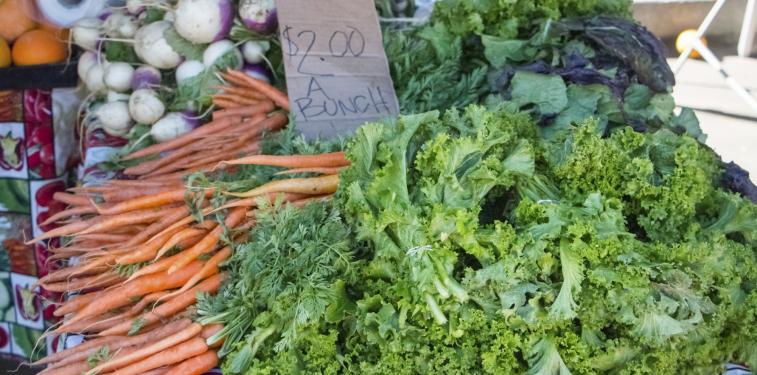Since the first farmers’ market popped up in Victoria in 1999, there are now more than 160 across the country, according to the Australian Farmers’ Market Association.
The key attraction of farmers’ markets for producers is that they can bypass wholesalers and sell their produce directly to consumers at a better profit margin.
By having direct contact with consumers, farmers can trial new varieties of produce directly with their customers and build their own brand. They can also find synergies by complimenting a routine trip to a restaurant they may supply in the city with a market stall.
The rise of farmers’ markets was originally driven in Australia by environmentally conscious consumers and those who wanted to buy local produce (which was often organic) and support farmers. It is estimated 75 per cent of producers travel less than 100 kilometres to a farmers’ market.
But more recently, the growth of farmers’ markets has been fuelled by the growing consumer focus on the providence of food (such as how and where it is grown or made) and a growing demand from people wanting a more rounded shopping experience.
In additional to their weekly shop in a supermarket, more consumers want to have a social experience when they shop, such as having a chat with the person who grew their produce. Farmers’ markets have evolved into places where people can not only buy food but have a full social experience and maybe even catch up with their friends.
Now, the farmers’ and weekend market concepts are making their way into retail centres and traditional retail strips.
In September, Melbourne CBD’s first farmers’ market opened in the glass-covered Goldsbrough Lane that is part of the GPT-owned CBW office building on the corner of Bourke and William Streets.
Aside from adding some extra vibrancy to the already busy laneway occupied by several popular cafés, restaurants and boutique retailers, Goldsbrough Lane Gourmet Farmers market allows many office workers and city residents to buy food directly from producers. And maybe have an experience they cannot find elsewhere in the CBD.
“It’s a really lively activated space that was previously just a lane,” the City of Melbourne’s Lord Mayor Robert Doyle recently told the Herald Sun newspaper.
Previously, shopping centres and markets were considered to be at the opposite poles of the retail spectrum. But the two experiences are now merging.
Casual traders have long been a feature in the public areas of some shopping centres. But – thanks to the growing popularity of weekend and not just farmers’ markets – shopping centres are embracing the community’s growing appreciation of this type of experience.
GPT’s Rouse Hill Town Centre in Sydney has for some time hosted outdoor markets, which have proved very popular with the surrounding community. And this year, GPT’s Chirnside Park shopping centre in Melbourne started hosting a very popular twilight market.
The weekly Eat Street night market that features live music on Wollongong’s Crown Street mall (that runs alongside GPT’s Wollongong Central) has also proved to be a very popular attraction since it started in late 2014.
With the internet now pervasive in all aspects of daily life, the growing popularity of markets shows people still want offline experiences such as markets.
It is likely market-style food and retail offerings will become just another element in the retail mix at many centres and shopping strips into the future, as more people seek offline environments where they can connect, socialise and interact with other people face-to-face.
